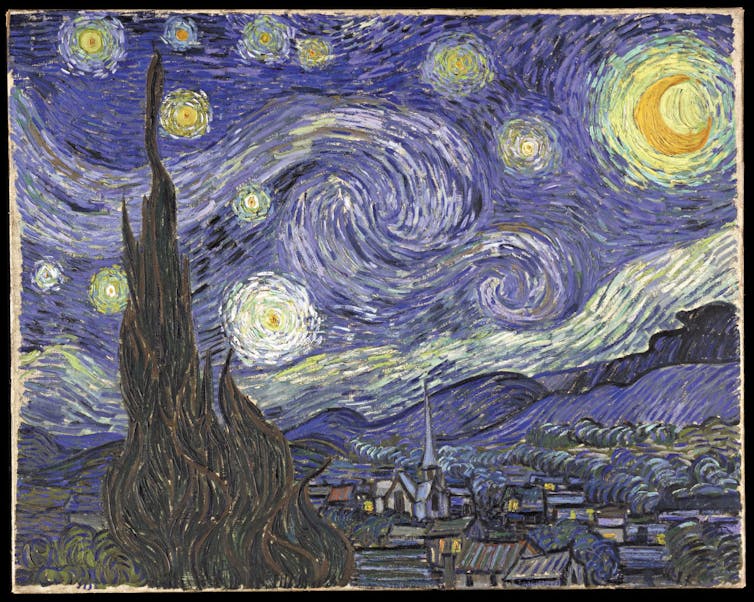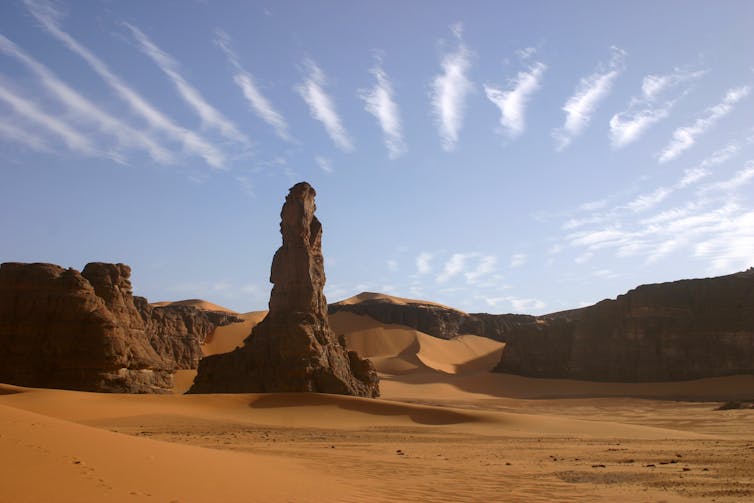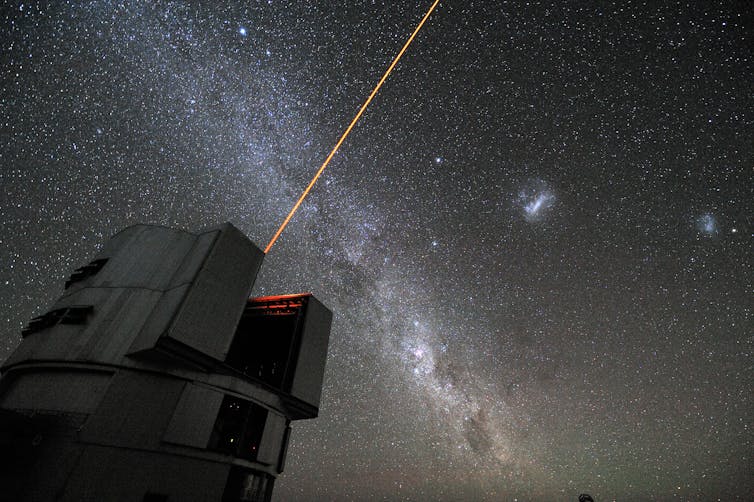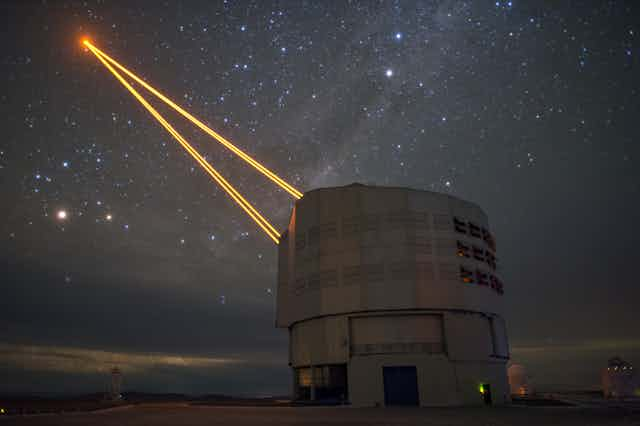This is an article from Curious Kids, a series for children. The Conversation is asking kids to send in questions they’d like an expert to answer. All questions are welcome – serious, weird or wacky!
Why do stars twinkle? – Max, 3, Earlwood.
Max, that’s a fantastic question! And the answer, it turns out, is all around us.
Have you ever been out on a really hot day? Like ice-cream-melting-through-your-hands hot? Well, if you have, you may have noticed trees near the horizon being a bit wobbly or blurry. It looks strange, and something very similar is happening when we see stars twinkle in the night sky.

When we look up, we don’t just look into space. We’re actually looking at space through all of the air above us, called the atmosphere.
The Earth’s atmosphere is a layer of air. A whopping 120 kilometres tall, or more. This air, around and above us, moves and swirls around the Earth at different speeds.
How fast this air travels, depends on its temperature. When the air is hot, it has loads of energy and loves to move around. But when the air is cold, it doesn’t move as much.
Hot air is also lighter than cold air, so it rises past, and mixes with, the cold air around it. This mixing creates swirls in the atmosphere known as “turbulence”.

Air can also be bumped around as it passes up and down hills and mountains on the Earth’s surface, creating waves that reach into the upper atmosphere. These waves disturb the air above, also causing turbulence.

As light from a star races through our atmosphere, it bounces and bumps through the different layers, bending the light before you see it. Since the hot and cold layers of air keep moving, the bending of the light changes too, which causes the star’s appearance to wobble or twinkle.
Indigenous Australians and Torres Strait Islanders have been observing the twinkling of stars for thousands of years. The stars’ twinkling shows how the winds are moving, which can really help when predicting weather - like really hot days.
Correcting the twinkle
While twinkling looks pretty, astronomers find it very annoying. This is because it blurs the things we want to see, like distant galaxies.
What can we do about this?
Well, space is the best place to see a star without a twinkle. However, getting big telescopes into space is very hard.

We can build big telescopes on the ground that use lasers and bendable mirrors - bending the mirrors to match the twinkling starlight. This then shows us the whole universe, as if the atmosphere vanished above us!

But what about the planets?
So that’s the story of why stars appear to twinkle in the sky. If you look really carefully, you might have noticed that planets, like Venus and Jupiter, don’t seem to twinkle like the stars around them.
Why is that?
Well, if you look at a star through even the biggest telescope, you still just see a tiny point of light. This light comes through the atmosphere in a tiny beam - that can be easily knocked around.
If you look at the planets through a telescope, you see their disks - they are close enough to us that we can “zoom in”, and see a planet, rather than a point of light. That means that the light from those planets comes through the atmosphere in a much thicker beam than that from a star - and that thicker beam is much harder to knock around.

As a result, the planets barely flicker, while the stars twinkle like crazy.
Hello, curious kids! Have you got a question you’d like an expert to answer? Ask an adult to send your question to us. They can:
* Email your question to curiouskids@theconversation.edu.au
* Tell us on Twitter by tagging @ConversationEDU with the hashtag #curiouskids, or
* Tell us on Facebook

Please tell us your name, age, and which city you live in. You can send an audio recording of your question too, if you want. Send as many questions as you like! We won’t be able to answer every question but we will do our best.


